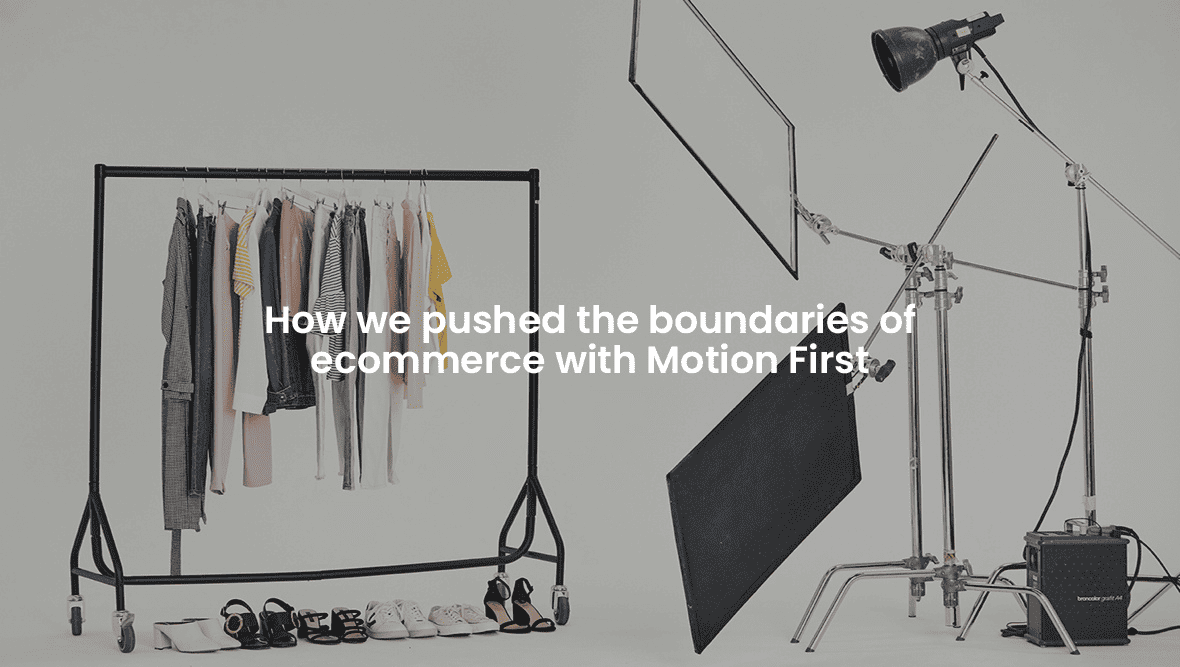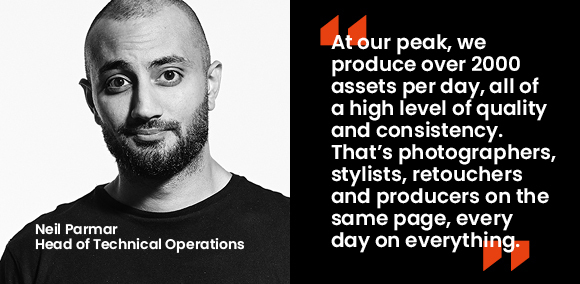
Neil Parmar is our Head of Technical Operations, he’s been working in photography for decades and knows what it's like to be at the beginning of something special when it comes to innovation. Read his thoughts on Motion First below.
For a while I’ve been thinking about the first inkling of what Motion First could be. And it led me to start thinking about buckets, bear with me on this one.
Let’s start at the beginning. In March 2019, Instagram announced it would introduce the checkout feature that is familiar to us all. That’s a big deal! Why? It makes people more susceptible to impulsive purchases. Instagram has swung from a place where you are looking at photos of your friend’s cats to buying something within minutes. For our clients, it merges brand awareness with content that generates direct revenue and has led to increasing digital marketing budgets ahead of ecommerce photography.
So back to those buckets. What if we could sell buckets of photography and video? Currently clients come to us for a specific purpose, whether it’s for ecommerce assets, a social shoot or for campaign shots. But what if they had a bucket of assets that were so beautiful, consistent and technically accurate that they could use it across all of their platforms?

Why does this make sense for our clients?
- They can harmonise assets both socially and online, bolstering their brand identity.
- It reduces a large amount of duplication (and costs) between ecommerce and marketing departments.
- We provide them with more motion, shown to drive greater customer loyalty and purchases.
The Ideas Stage
First, I had to validate the idea. In the darkness of the various post-production studios around seventy7’s London office I’ve seen our ability to adapt what we produce. We’ve been through many firsts together for the company in stop-frame animation, videos, motion and photography; while at our peak, we produce over 2000 assets per day, all of a high level of quality and consistency.
That’s photographers, stylists, retouchers and producers on the same page every day on everything from how the images look down to the strict folder structure. That’s a phenomenal starting point.
The First Test
In an attempt to clarify what Motion First could be I organised a test called “Football Fundial”. One videographer, one photographer, one model/photographer/assistant, and a pile of football shirts. With half a day in the studio and half in an idyllic location (the park across the street) the team had produced model and still life images for each product, location images, a GIF and enough footage to produce a 30 second promo video with 6 shorter ones.
Breaking the rules through creativity
Crops, sizes, assets for various social platforms, these are factors you have to think about when you’re creating video. For still photography it wasn’t so much of a problem, so I started the conversation with Iain and Ollie about how we fit a square video peg in a rectangular hole. Part of the solution was to remove one predisposition borne by decades of TV and computer screens. That is that video has to be landscape. Mobile content has changed that, with social media outputs consisting mostly of vertical or square crops.
While there will always be demand for horizontal or landscape video due to hosting platforms such as YouTube and Vimeo, it’s shrinking and should be the exception and not the rule - something we ironically realised with still model photography over half a decade ago. So, it should be seen that any landscape requirement will be an addition and will be shot separately.
Merging stills and video
It is at this point I encourage you to read Iain’s piece around Motion First if you haven’t already. His thoughts on merging the still/video workflow further will be an integral part of seventy7 for years to come and will be part of the industry thinking too.
This shift in having video as a not simply an add-on to still photography is something we will need to persistently improve on both internally and externally. Video shoots require more creativity and direction than still photography and visualising the final output is more difficult.
Where we’re going, we don’t need roads
As the world gets bigger, the majority of content is getting smaller in pixel size. While the days of producing every asset at certain sizes for print may become a thing of the past, the ability for video cameras to shoot bigger opens up flexibility of what is captured on a shoot day.
The key is how we maximise what is shot on that day using lessons we have learnt together in the past decade; our abilities and unique position is being part of how multiple brands are working at once. The lifespan of assets will also evolve. Most social media assets last a day or are reused so costs are key.
In the future the 5G rollout will make more mobile content available increasing the demand for video again. Advertising posters are being replaced with digital screens meaning that content will converge even more and a single asset with some tweaking will be able to reach even further.
There will be what I call the “Zara Moment”. When Zara reapproached its ecommerce photography in an editorial way, this led to scores of people wanting to copy their website style. It was a shake up on traditions and proof that ecommerce wasn’t all shot on a white background. Importantly, one brand had to take a leap of faith. When a marketing manager decides to jump into a Motion First ecommerce strategy? That will be a similar moment.
Be ahead of the pack and choose seventy7 for your Motion First strategy, contact us here. Read more about Motion First with our Head of Photography, Iain Dickens’ blog here[.
